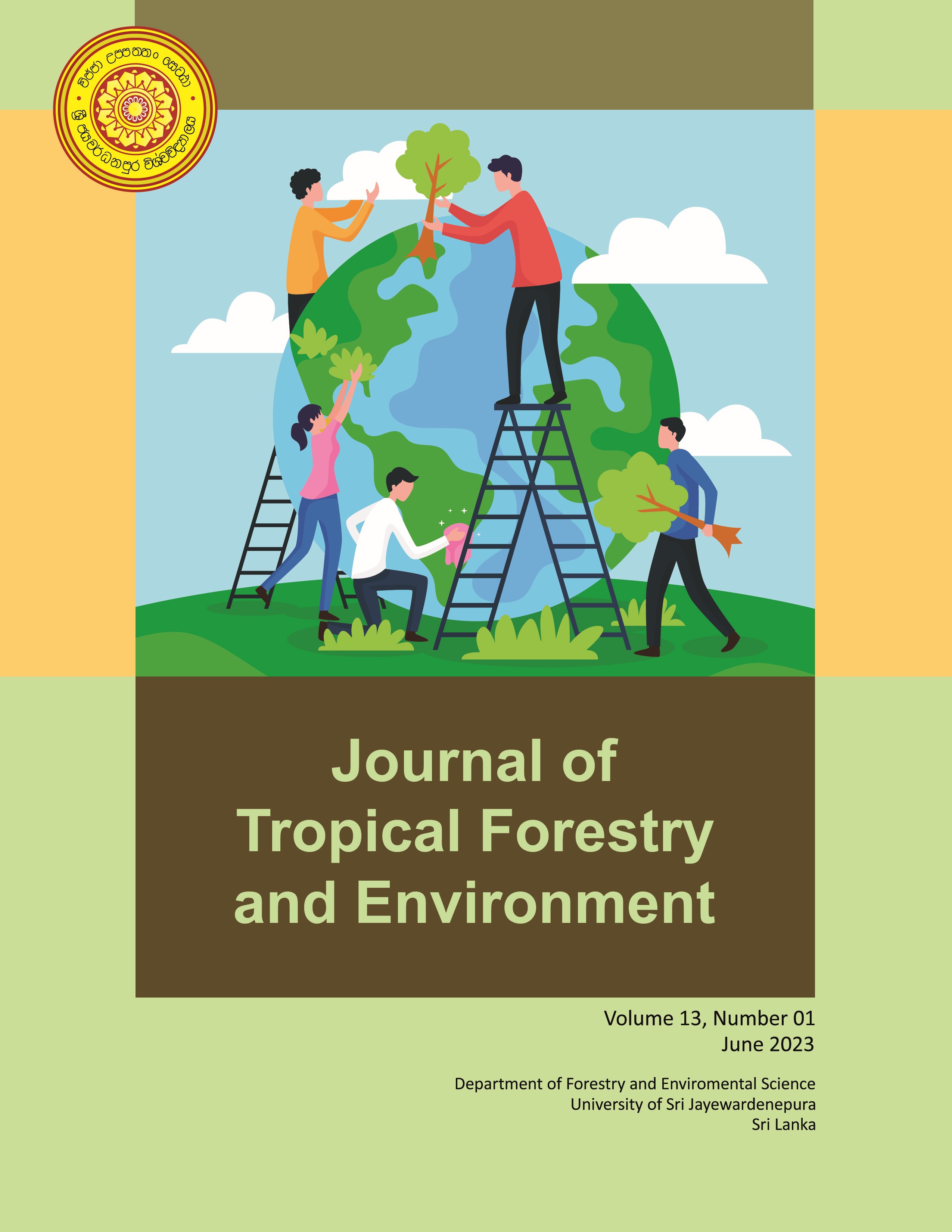Modeling β Diversity and Simpson’s Index Using Hyperion Reflectance in Vansda National Park, Gujarat
DOI:
https://doi.org/10.31357/jtfe.v13i01.6512Abstract
Global biodiversity is under threat due to increasing anthropogenic activities. Pressure on biodiversity is immense especially in rapidly developing countries like India. In the present study, an attempt has been made to establish accurate relationships between Hyperion (EO1) reflectance spectra and measured β diversity index and Simpson’s index of the tropical moist deciduous forest of the study area. Developed accurate models can help in mapping and assessment of diversity at larger spatial scales. The efficiency of statistical modeling techniques including Partial Least Square (PLS) regression and Multiple Linear Regression (MLR), is demonstrated in this study (with maximum R2 of 0.74 and 0.73 for PLS and MLR respectively). A vegetation index (SR 1457/933) is introduced for β diversity estimation, yielding exceptional accuracy in model development and validation (with a maximum R2 of 0.63).
Downloads
Published
How to Cite
Issue
Section
License
The publisher retain the copyrights of contents published, and all open access articles are distributed under the terms of the Creative Commons Attribution-Noncommercial-No Derivative Works 3.0 Unported License[U1], which permits unrestricted use, distribution and reproduction in any medium, provided that the original work is properly cited.
You can download the Legal Code for this License at: http://creativecommons.org/licenses/by-nc-nd/3.0/legalcode


